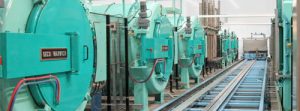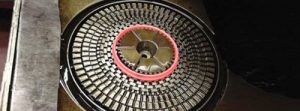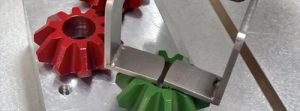
Then faced with a need to optimize a process, gain as much information as possible; design of experiments (DOE) is a go-to scientific method to achieve optimal results with limited resources. We live in a world where budgets are fixed, and resources are tighter. DOE entails making systematic, targeted changes to process variables to observe and identify reasons for outputs. As processes go adrift, there are observations made, questions raised, hypotheses made as to why the process is not under control. Or, when a new to me product or process is developed, there are input and variables whose interactions are to be understood, such that desired product or process can be obtained in an efficient and effective manner. That said, before running DOE, we must be clear about the objectives. We need to know what the possible controllable variables are that affect the main objectives and there must be desire to gauge, compare, and understand the interactions of those variables.
In fracture mechanics of materials, DOE is used for accurate and efficient experimentation such that a material with desired properties can be developed and its failure mechanisms can be understood. This approach overcomes the traditional one factor at a time (OFAT) method, which does not account for interactions. DOE of fracture mechanic benefits from methodical progression from planning, testing, analyzing, and interpretation of results. By taking interactions into account, the findings are reliable, and desired outcomes are achieved with minimum resources and time.
Fracture mechanics incorporates flaw or crack geometry into the study or calculation of when a material will break. Fracture mechanics, a field of study that includes fracture toughness, deals with the effect of defects on the load-bearing capacity of materials and structures. The approach is practical, as it takes into consideration that all materials and structures have inherent defects. Practically, there are no defect-free engineering materials; defects should be part of any design and fit-for-service assessment. This technique is an advancement to the approach that only considers conventional materials strength. Defects in materials can be voids, inclusions, secondary phases, dislocations, grain boundary, and grain misfits in microstructural level. In macro levels, they include surface finish, notches, scratches, materials boundaries, cracks, and environmental degradation.
In linear-elastic fracture mechanics, stress intensity is defined as

Where I indicate Mode I crack, f(g) is a dimensionless geometric constant, σ is the applied stress, and a is the edge crack length or half crack length of interior crack. The critical value of stress intensity which is the fracture toughness for Mode I cracking is defined as

The fracture toughness is dependent on geometry factor, surface condition, stress applied, crack size, specimen orientation, temperature, heat-treatment condition, loading rate, and environment.
Selecting the most critical factors is key to a successful DOE. Factors are parameters that are selectively changed to bring about changes in response variables. To limit the number of factors, consultation with subject matter experts, right brainstorming, and focusing on impactful factors help keep it under control. Once factors are chosen, they are limited to certain levels, such that the impact of the factor and its levels can be measured. In a complex process, there may be many direct and indirect factors. Being selective on the number of factors keeps the experiments focused, lowering the cost of running DOE.
Levels of factors are typically two or three to keep the experimental design manageable. More levels mean larger experimental design and complex results. Response variable is the output being measured because of the experimental trials. The response variable drives our analysis of the impact factor, so it is vital to have a measurement system that is accurate and consistent. Quantitative response variables are preferred. Some of the examples of quantitative responses are temperature, time, pressure, thickness, length, etc.



Some of the critical factors for fracture toughness of Grade 91 steel are temperature, loading rate, specimen orientation, heat treatment, and specimen geometry. Given the steel’s current use and prospective use in elevated temperature applications as superheaters, water wall, pressure vessels, its typical temperature range is 300-600°C. Grade 91 is a ferritic-martensitic steel which has a differing microstructure based on its heat-treatment conditions, such as as-received, normalized, and normalized and tempered. Loading rate gauges the rate sensitivity of ligament tearing or crack growth. So, a 23 full factorial design with eight unique trials is demonstrated in this article.
A representative Design Matrix has three factors — temperature, heat treatment, and loading rate — that have two levels each (Table 1). For temperature, 300°C is notated as (-1) and 600°C is notated as (+1); similarly, for heat treatment (-1) for as-received condition and (+1) for normalized and tempered condition; loading rate (-1) for 0.1 mm/s and (+1) for 0.01 mm/s. The design matrix shows interactions between test temperature, heat-treatment condition, and loading rate. The KIC for illustration purposes is shown as response (Figure 1).

Table 1 also shows the effect of changing levels of factors. Effect is the change in the average value of the response variable when the factor(s) are changed from one level to the next level. In this case, the change in the level of temperature has the lowest effect while the change in the level of loading rate is highest, four times that of test temperature as seen in Main Effects Plots shown in Figure 1. Now, we will investigate the interaction between factors and their levels. The interactions between test temperature, heat treatment, and loading rate have the most impact on the fracture toughness, while the interaction between temperature and heat treatment have the least impact.
The two-way ANOVA (Table 2) is given using an alpha of 0.05. The F-values computed from the data are smaller than the F-critical values (theoretical values from the F table) in both cases and the corresponding P-values are higher than alpha level of 0.05. This indicates that test temperature, heat treatment, and loading rate do not have significant impact on the KIC in this case. Thus, the null hypothesis (Ho) that there is no significant impact on fracture toughness of Grade 91 steel due to the temperature, heat treat, and loading rate cannot be rejected. Further, none of the interactions (A ↔ B,
A ↔ C, B ↔ C, and A ↔ B ↔ C) are statistically significant at alpha of 0.05. The alpha level of 0.05 can be changed to 0.01, 0.1 or 0.2 depending upon consequence of wrong conclusions. For a robust analysis, additional replicates or different alpha would be needed.
The design of experiments is an effective statistical tool for materials testing as it maximizes the amount of information gained while minimizing the number of it, especially in the critical field of fracture mechanics. This article was focused on linear-elastic fracture mechanics, but DOE can be expanded to other fracture mechanics testing, such as elastic-plastic fracture toughness (J-Integral), crack tip opening displacement (CTOD), stress intensity factor (K), and crack growth rate (da/dN). Factorial experimental design enhances efficiency and reliability by looking into several factors and their different levels simultaneously instead of OFAT. As we develop more engineered materials that push the limits of materials application, DOE is the way to go for faster materials research, development, testing, and making them application ready. DOE is an indispensable tool in implementing valid and efficient tests for studying materials behavior in metals, polymers, composites, ceramics, semiconductors, and novel hybrid material such that quantitative results can be produced so that it can guide to safe application parameters.






















